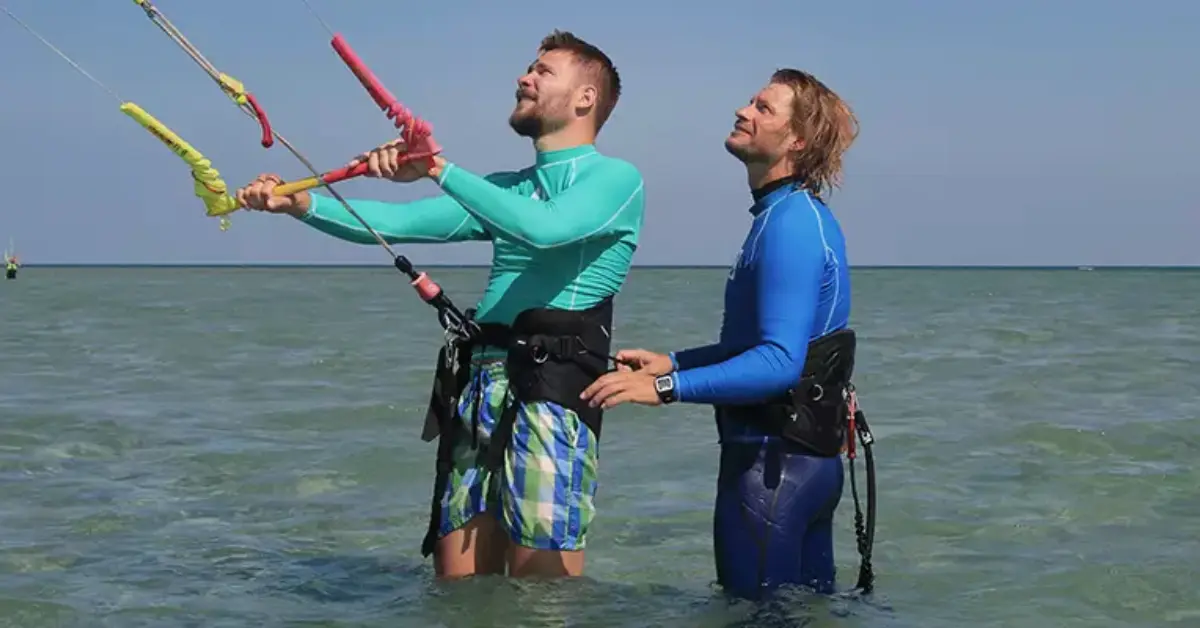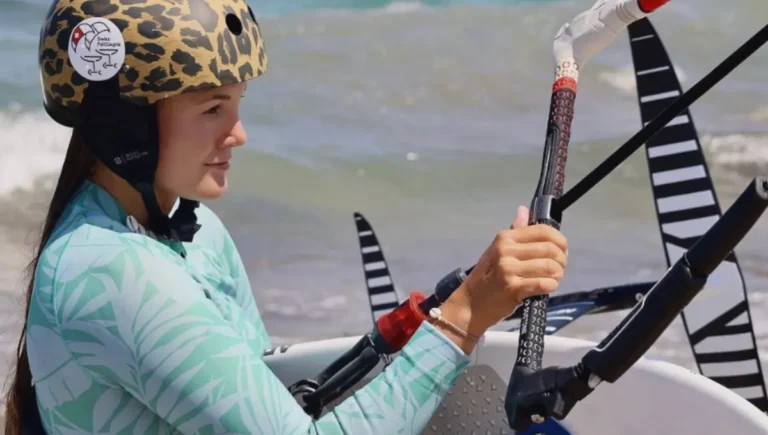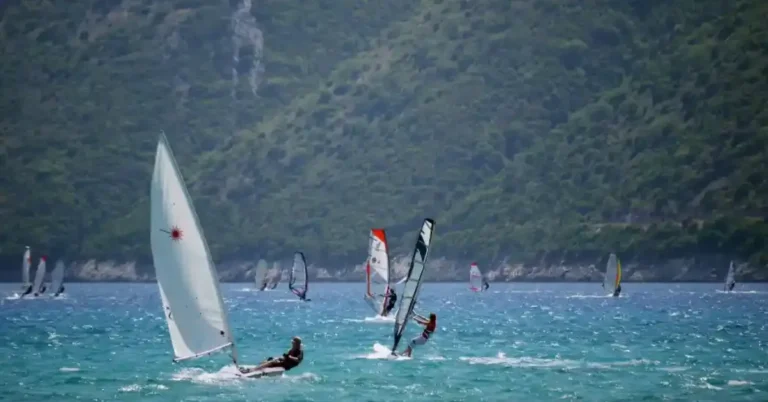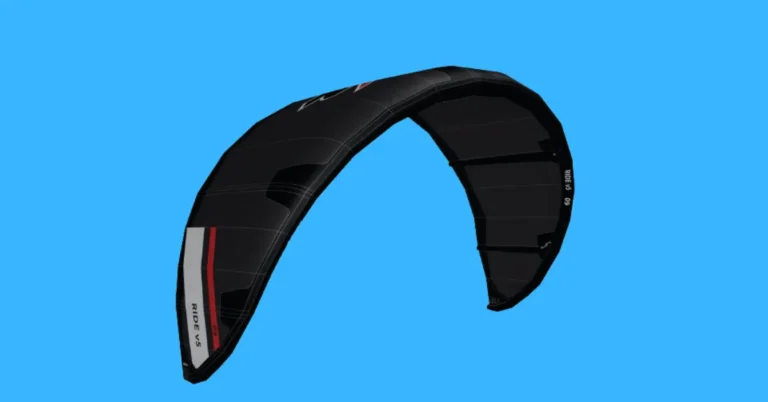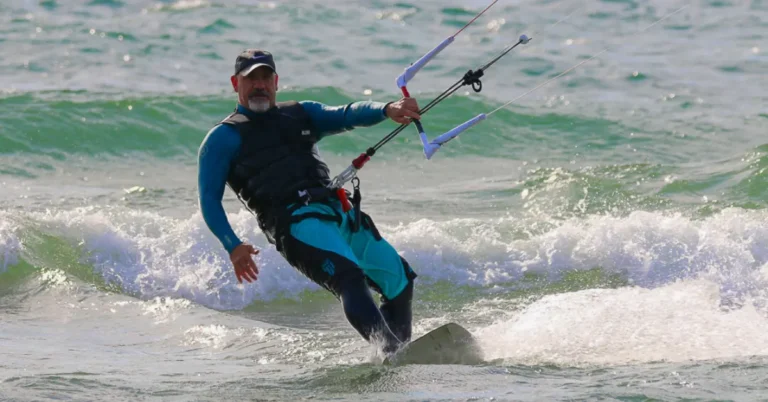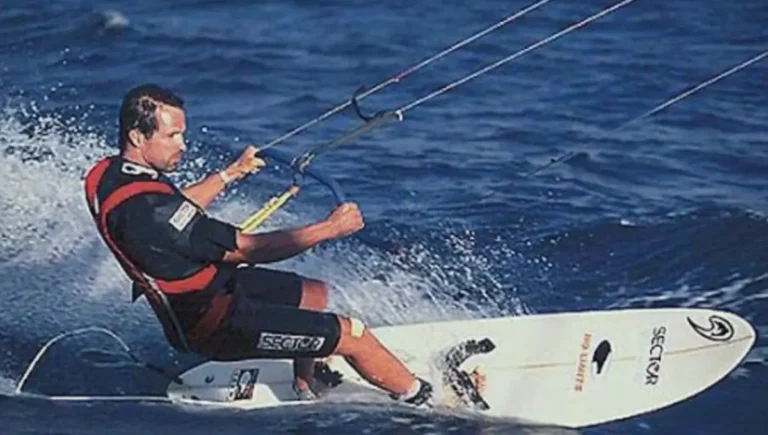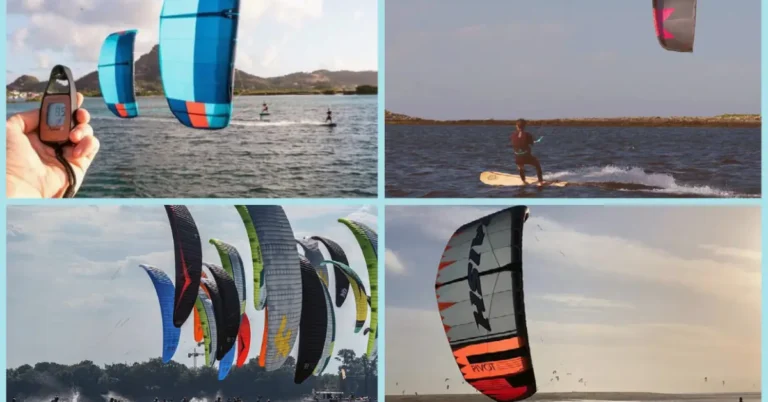Kitesurfing: How I Learnt to Fly
Discovering the art of kitesurfing was a transformational journey for me. The thrill of harnessing the wind’s power to glide over the waves is unparalleled. Learning to balance on the board while controlling the kite was both exhilarating and challenging.
With each lesson, I gained confidence and mastery, feeling the rush of adrenaline as I soared higher and faster. From the first hesitant steps on the beach to the breathtaking moments of flight, kitesurfing has taught me perseverance, focus, and the sheer joy of conquering nature’s elements. This is the story of how I learned to fly.
Also Read: Basic Fishing Gear
Kitesurfing – We Have History
My boyfriend Martyn convinced me to take a short break in Tarifa for biking, but also to give kitesurfing another try. I had learned it in college but never had time to improve. Then, an injury stopped me from trying again. Martyn suggested more lessons in Tarifa, so I signed up.
This time, the Levante wind helped. It’s a strong wind that blows across Tarifa’s mountains and funnels into Gibraltar. With Morocco as a backdrop, colorful kites filled the sky, including many newbies like me, struggling to control them in the gusty winds.
Lesson 1 – The Basics
My instructor Jordi taught me the basics of setting up the kite and lines. We connected the kite to the lines, choosing the right size based on the wind’s strength. With gusts up to 35 knots, I flew a 3.5m kite on 10m lines. Despite the strong wind, I tried to stay calm.
Jordi then hooked himself to the harness and launched the kite into the sky. He explained the wind window, an imaginary area where the kite can fly. It’s like a clock, with 3 and 9 being the landing points for the kite.
Key Points For Beginners
- Understand that larger kites have a slower response to bar movements.
- Depower the kite by pushing the bar away.
- Control the kite effectively by making small adjustments to the bar.
Lesson 2 – Wind Windows
After grasping the basics of kite control, I tackled the challenge of flying with one hand and preparing for board handling. It proved tougher than expected, requiring precise movements on the bar to keep the kite steady at 2 or 10 o’clock in the wind window.
Understanding the wind window’s three zones is crucial.
- The Edge/Neutral Zone: Kite stays stationary here with little power.
- The Intermediate/Soft Zone: Kite gains power gradually as it moves dynamically.
- The Power Zone: The strongest area, requiring careful control, mainly used in light winds or advanced tricks.
Lesson 3 – Body Dragging
On day two, I focused on mastering the body drag technique, essential for moving both upwind and downwind if you lose your board. In the warm Atlantic waters, I practiced moving the kite to 10 o’clock, allowing it to pull me forward with the wind. However, I accidentally pulled too hard on the bar, sending me airborne and crashing into the water.
After some practice, I improved my downwind body drag. Then, I tackled the trickier task of going upwind. It was challenging, especially in choppy waters, as I struggled against the current while keeping the kite steady. Despite the difficulties, I persevered and made progress.
Lesson 4 – Adding The Board
Adding the board was a whole new challenge! Watching Jordi effortlessly glide away, I felt a bit overwhelmed. Sitting in the water, I tried to get the board on my feet quickly while keeping the kite steady. But it was harder than I thought, especially with the unpredictable wind.
For Beginners
- Roll your body over the board slowly.
- Straighten your front leg as you stand.
- Put pressure on your back leg.
- If the kite loses power while standing, make figure eight around noon.
- Look where you want to go.
Despite some struggles and a couple of mishaps, I kept at it. By the end of the session, I managed to stand up, if only briefly. Kitesurfing demands both mental focus and physical strength, but I’m determined to keep learning, even back in the UK.
What inspired you to take up kitesurfing?
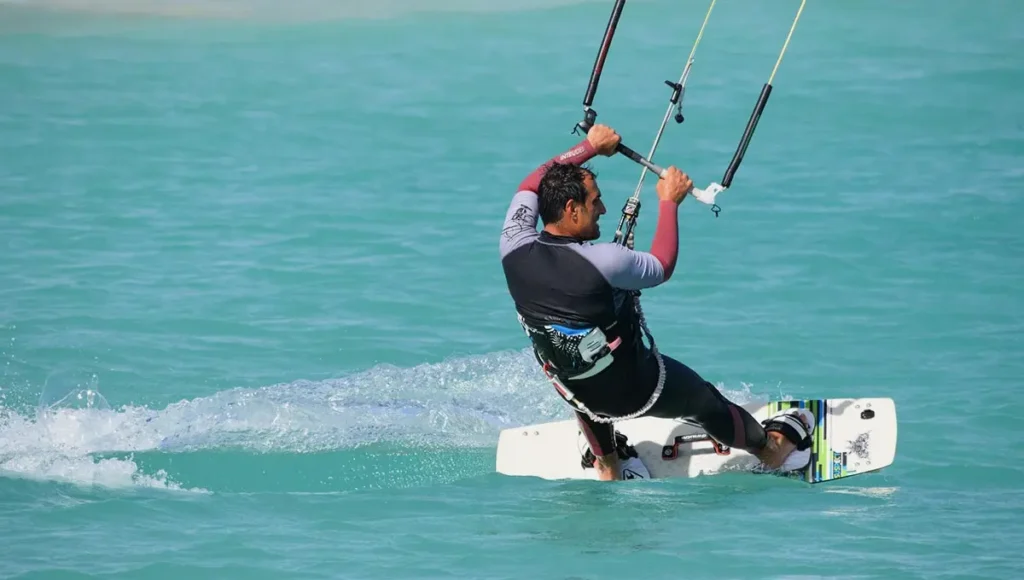
The allure of kitesurfing stemmed from a lifelong love of water sports and a desire to harness the elements in a thrilling new way. Watching skilled kitesurfers glide effortlessly across the waves, propelled by the wind, sparked a sense of awe and curiosity within me.
The freedom, adrenaline, and connection to nature inherent in the sport appealed to my adventurous spirit. Eager to challenge myself and explore new horizons, I embarked on the journey into kitesurfing, driven by a deep-seated passion for adventure and a yearning to experience the exhilarating sensation of flying over the water.
What are some essential skills needed for kitesurfing?
Several essential skills are crucial for successful kitesurfing:
- Kite Control: Mastering precise control over the kite is fundamental. This involves understanding how to manoeuvre the kite through the wind window effectively.
- Board Control: Learning to control the board while riding is essential for maintaining balance and navigating through the water.
- Water Start: Knowing how to initiate from a floating position to standing on the board is critical for getting started and recovering from falls.
- Wind Awareness: Understanding wind patterns, strengths, and potential gusts is vital for safety and optimizing performance.
- Safety Procedures: Being proficient in safety protocols, including proper kite and equipment setup, self-rescue techniques, and communication signals, is crucial for avoiding accidents and handling emergencies.
- Body Positioning: Maintaining the correct body posture, including proper weight distribution and stance on the board, helps maximize control and efficiency while riding.
- Turning Techniques: Learning how to execute smooth turns while kitesurfing enhances maneuverability and enables navigating different water conditions and obstacles.
- Physical Fitness: Building strength, endurance, and flexibility are beneficial for handling the physical demands of kitesurfing, including balancing on the board, controlling the kite, and enduring extended sessions on the water.
What equipment is necessary for kitesurfing, and how did you choose yours?
Several essential pieces of equipment are necessary for kitesurfing:
- Kite: The kite is the primary tool for harnessing wind power and propelling the rider across the water. It comes in various sizes depending on wind conditions and rider skill level.
- Control Bar and Lines: The control bar is used to manipulate the kite’s direction and power. It is connected to the kite by lines, which transmit control inputs from the rider to the kite.
- Board: Kitesurfing boards come in different shapes and sizes, designed for various riding styles and skill levels. A board provides buoyancy and stability while riding on the water’s surface.
- Harness: The harness attaches the rider to the control bar and relieves strain from the arms, allowing for better control and endurance during longer sessions.
- Safety Leash: A safety leash connects the rider to the kite, enabling quick release in emergencies to deactivate the kite’s power.
- Wetsuit: Depending on the water temperature, a wetsuit provides insulation and protection from cold temperatures and abrasions while kitesurfing.
- Helmet and Impact Vest: Safety gear like a helmet and impact vest offer protection against head injuries and impact from falls or collisions.
- Pump: A pump is used to inflate the kite before launching, ensuring proper inflation for optimal performance.
Choosing the right equipment involves considering factors such as:
- Skill Level: Beginners typically start with larger, more stable kites and beginner-friendly boards.
- Budget: Balancing quality and cost is essential when selecting equipment.
- Local Conditions: Tailoring equipment choices to prevailing wind conditions and water environments ensures suitability for the rider’s location.
- Brand Reputation: Opting for reputable brands known for quality, durability, and safety can enhance the kitesurfing experience.
Frequently Asked Questions
Conclusion
My journey into kitesurfing has been nothing short of exhilarating and transformative. From the initial excitement of learning the basics to the thrill of mastering advanced techniques, every moment on the water has been a lesson in resilience, determination, and sheer joy.
As I’ve soared over waves and felt the wind beneath my kite, I’ve discovered a newfound sense of freedom and connection to the elements. Kitesurfing isn’t just a sport; it’s a passion that has enriched my life in ways I never imagined. It’s taught me to embrace challenges and inspired me to reach for new heights, both on and off the water.
